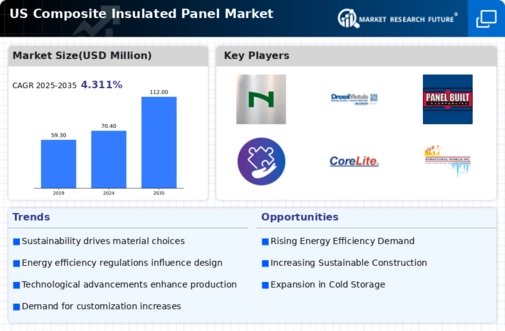The US Composite Insulated Panel Market is characterized by a diverse set of players who are actively competing to carve out their market share and fulfill the burgeoning demand for energy-efficient and sustainable building materials. This market segment has witnessed substantial growth due to the increasing awareness of environmentally friendly construction practices and the need for improved thermal insulation.
Competitive insights reveal a landscape driven by innovation, wherein companies are investing heavily in research and development to introduce advanced products that not only meet energy efficiency standards but also cater to aesthetic requirements. The dynamic nature of the market is further influenced by fluctuating raw material costs and evolving regulatory standards, compelling market participants to adapt swiftly to maintain competitiveness.
Nucor has firmly established itself as a formidable player within the US Composite Insulated Panel Market, known for its robust manufacturing capabilities and commitment to sustainability. The company utilizes state-of-the-art techniques to produce high-quality insulated panels that are favored for their durability, energy efficiency, and versatility across various applications.
Nucor’s strengths lie in its extensive production network and strategic partnerships, allowing it to leverage economies of scale effectively. Additionally, the company is recognized for its innovation in introducing composite insulated panels that meet stringent building codes, further enhancing its reputation and market presence in a competitive landscape.
Drexel Metals has emerged as a significant entity in the US Composite Insulated Panel Market, focusing on delivering premium metal roofing and insulated panel solutions designed to meet the diverse needs of the construction industry. The company prides itself on its innovative product offerings, which are coupled with reliable service and a commitment to quality.
Through its strategic initiatives, including mergers and acquisitions, Drexel Metals has expanded its product portfolio and enhanced its market presence in the insulated panel segment. The company specializes in offering a range of insulated metal panel systems that cater to various architectural and practical requirements, showcasing strengths in customization and rapid project delivery.
Drexel Metals also emphasizes sustainability through the use of recycled materials and energy-efficient production practices, aligning with the growing trend towards environmentally responsible building solutions.




















